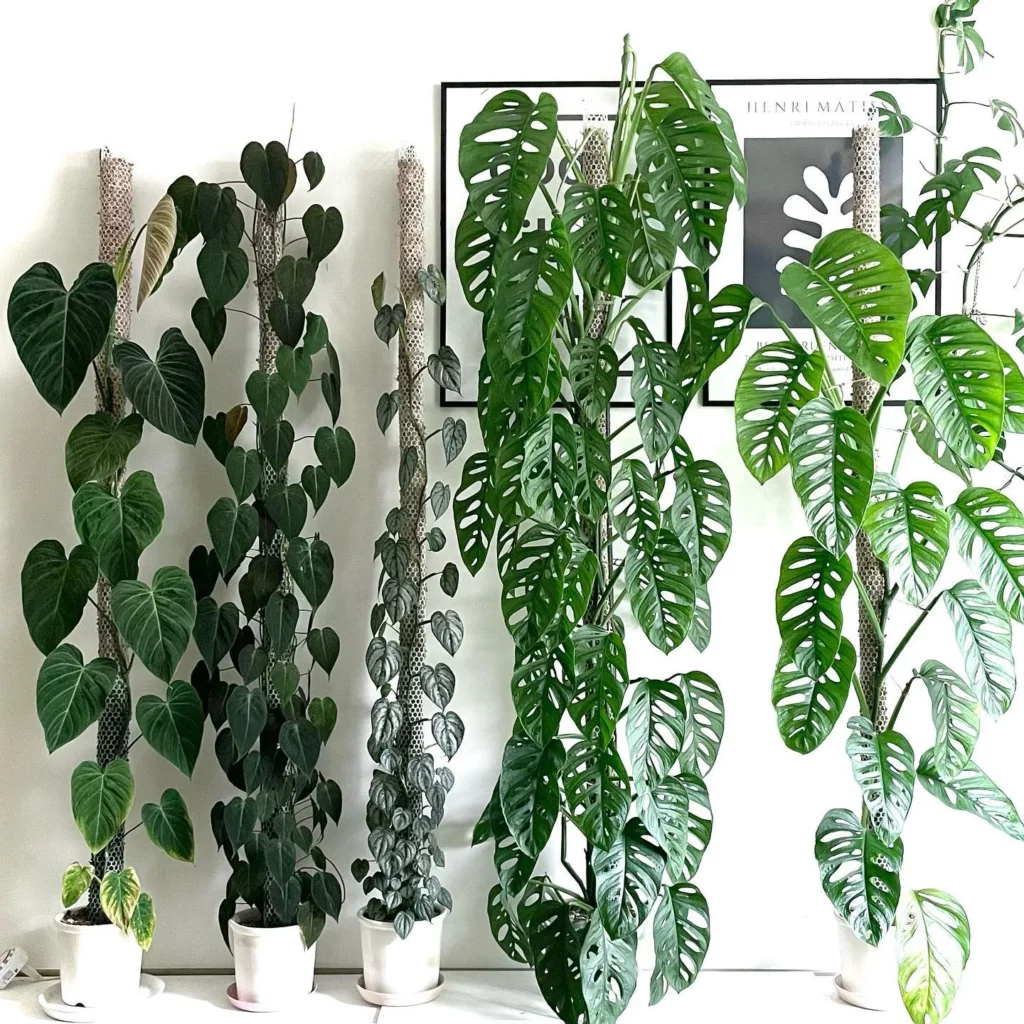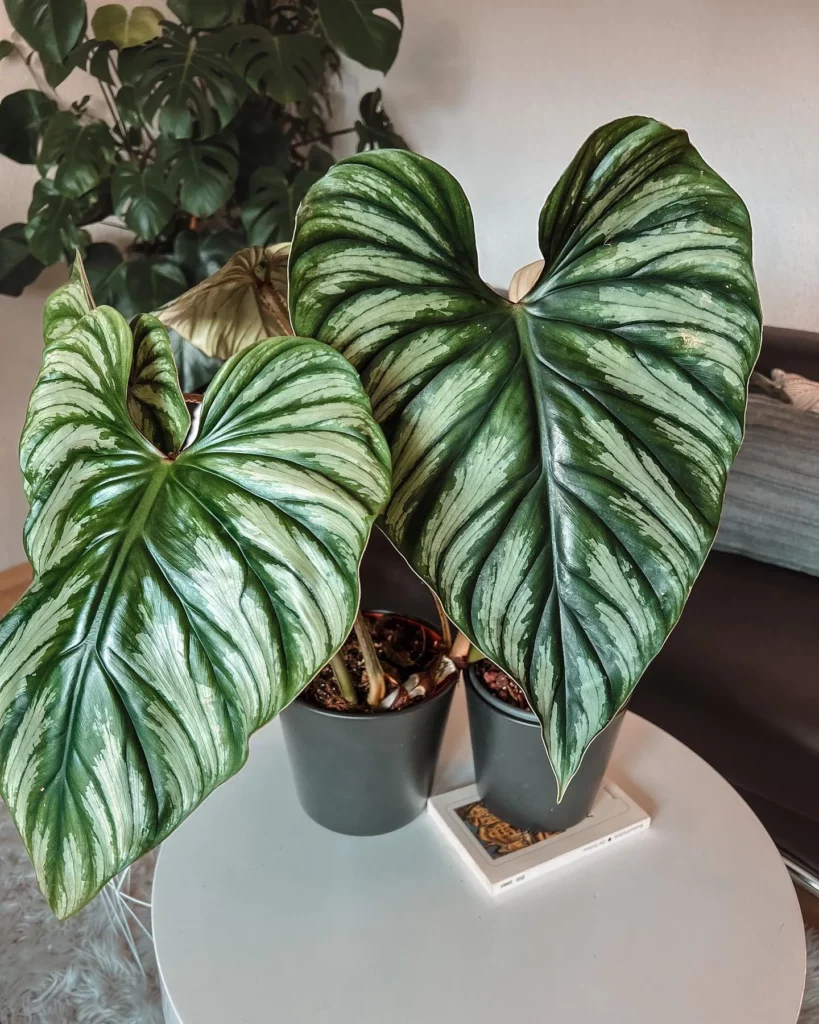To repot a large Philodendron, gently remove it from its current pot, trim any excess roots, place it in a larger pot with fresh potting soil, and water it well.
Repotting is an essential part of caring for your large philodendron plant. This process promotes healthy growth and ensures that your plant has enough space to thrive. Over time, the roots of your plant will outgrow their current pot, leaving little room for water and nutrients to reach them.
Without repotting, the roots will become root-bound and compromise the overall health of the plant. Repotting may seem like a daunting task, but it doesn’t have to be.
With a little knowledge and patience, you can successfully repot your large philodendron at home. In this guide, we’ll walk you through each step of the process, from selecting the right pot size to caring for your newly-repotted plant.
No products found.
Selecting The Right Pot Size And Type



When it comes to selecting a new pot for your philodendron, bigger is not always better. In fact, choosing a pot that is too large can lead to overwatering and even root rot. On the other hand, choosing a pot that is too small can restrict growth and limit nutrient intake.
The ideal pot size should be just slightly larger than the current one. This will give enough space for new roots to develop without overwhelming them with too much soil or water.
Additionally, when selecting a new pot type, consider one with good drainage holes at its base. Avoid decorative pots that do not have drainage holes or have tiny ones as they can prevent excess water from draining away properly resulting in an unhealthy environment for our beloved plants.
No products found.
Preparing Soil Mixtures

Pre-packaged soil mixes may seem convenient but they are not always ideal for all plants especially those who need specific requirements like our philodendrons. A mix of peat moss, perlite, and potting soil is ideal for a philodendron as it allows for proper airflow and drainage.
No products found.
It’s essential to use clean soil to avoid introducing pests or diseases to the plant. Be sure to choose high-quality soil that is free of any debris or chemicals that may be harmful to your plant.
Don’t Be Rough With Your Philodendron



When removing your philodendron from its current pot, it’s important not to be rough with the plant. Any sudden movements can cause damage and shock the plant which could lead to stunted growth or even death. Instead, gently slide a knife along the edges of the pot to loosen any roots that may have attached themselves.
Carefully lift the plant out of its current container, being mindful not to pull on the stem too hard as this can cause breakage. By being gentle during this process, you are giving your plant the best chance at thriving in its new home.
Preparing For Repotting



Selecting The Right Pot Size And Type
When it comes to repotting your large philodendron, choosing the right pot size and type is of utmost importance. If you choose a pot that is too small, your plant will become rootbound and its growth will be stunted. On the other hand, if you choose a pot that is too large, the excess soil can retain too much moisture and cause root rot.
Therefore, it is essential to pick a pot that suits your plant’s current size. Not only should you consider the size when picking out a new pot for your philodendron, but also the type of pot.
Terracotta pots are ideal because they allow air to circulate around roots and help prevent overwatering. However, plastic or ceramic pots with drainage holes can work as well.
No products found.
The Negative Consequences Of Choosing An Improper Pot Size
Choosing an improper pot size can have dire consequences for your philodendron’s health. If you opt for a container that is too small, it won’t provide enough space for your plant’s roots to grow comfortably. Over time, this will lead to root binding where the roots wrap around each other in an attempt to find more space.
Not only will this stunt its growth but it may eventually lead to death because tangled roots are unable to absorb water or nutrients properly from soil mixtures. Moreover, if you go with a container that’s too large for your philodendron’s current size, excess soil may remain moist which leads to problems like fungus gnats or even mold in some cases.
The Necessity Of Preparing Soil Mixtures
Preparing soil mixtures before repotting is essential so as not just because pre-packaged soils may not be ideal but making custom soil mixtures allows you to tailor soil to your plant’s needs. To make a good mixture, first, choose the right type of soil.
For philodendrons, a well-draining mixture is essential because it prevents water retention and aids in healthy root growth. One popular option is equal parts of peat moss, perlite or vermiculite (or both), and coarse sand.
This mixture will allow for optimal water drainage and provide essential nutrients for your philodendron to thrive. Remember that not all plants need the same soil mixture so it’s important to research what kind of soil works best for your particular plant species before preparing any soil mixtures.
Removing The Plant From Its Current Pot

Gently Does It
When it comes to removing a large philodendron from its current pot, the key is to be gentle. This plant has been living in that pot for some time now and has grown accustomed to its environment. Any sudden movements or jarring motions could cause damage to the roots and stress the plant out unnecessarily.
Step-By-Step Instructions
The first step in removing the plant from its current pot is to water it thoroughly a few hours beforehand. This will help loosen up any soil that’s stuck to the sides of the pot and make it easier to remove. Next, gently tilt the pot on its side and slide your hand over the top of the soil, supporting the base of the plant with your other hand as you slowly lift it out of the container.
If you encounter any resistance, don’t force it – instead, try gently tapping or squeezing on opposite sides of the pot until you feel some give. Once you’ve successfully removed your philodendron from its old container, set it aside in a safe spot where it won’t get knocked over or damaged.
Tangled Roots No More
One common issue that many gardeners run into when repotting their plants is tangled roots. If left unattended, these tangles can cause problems down the line by strangling healthy roots and causing serious damage. To untangle these roots without causing any harm, start by using a pair of sharp scissors or garden shears to cut away any dead or rotten root material.
No products found.
Then use your fingers or a small gardening fork to gently comb through the tangles until they’re all separated. It’s important not to pull too hard on any one particular root as doing so can cause tearing and damage that may take weeks (if not months) for the plant to recover from.
Instead, be patient, take your time, and pay attention to what you’re doing. Your philodendron will thank you for it in the end!
Preparing The New Pot



The Importance Of Properly Prepared Pots
Before repotting your beloved philodendron, it is imperative that you have a pot that is suitable for its size. The size of the pot will affect how well your plant grows, so it’s important to choose one that is neither too small nor too large. When preparing a new pot, make sure to select one that is only slightly larger than the current container.
Soil Mixture Preparation
Once you have found an appropriate-sized pot for your philodendron, it’s time to prepare the soil mixture. There are many types of soil mixtures available in stores but using pre-packaged soils may not be ideal as they can sometimes be too dense or lack necessary nutrients.
Therefore, it’s recommended to make your own soil mixture and incorporate perlite or vermiculite. The best soil mixture for a philodendron should be well-draining yet moisture-retentive.
A good combination of ingredients would include peat moss, coarse sand, and perlite or vermiculite in equal parts. Make sure the soil mixture is well-mixed before placing it into the new pot.
Creating A Hole For Your Philodendron Plant
When preparing the new pot for repotting your philodendron plant, it’s important to create a hole in the center of the soil mixture. This hole should be deep enough so that when you place your plant into it, its base sits at least an inch below the rim of the pot.
To create this hole, push down firmly on the center of the soil with your fingers or a spoon handle. Make sure to create enough space around this hole for roots and easy access during replanting.
Avoid Adding Rocks and Materials At Bottom Of Pot
Contrary to popular belief, adding rocks or other materials at the bottom of a pot is not necessary. Doing so can actually hinder proper drainage and increase the likelihood of waterlogging.
It can also cause root rot in your philodendron plant. Instead, simply fill the pot with your prepared soil mixture until it reaches approximately 1 inch below the rim.
Make sure to gently tap down the soil around the edges to ensure it is evenly distributed. By following these steps, your philodendron will have a happy home that promotes healthy growth and a long life.
Repotting Process

The Importance Of Proper Placement
When it comes to repotting your large philodendron, proper placement is crucial for optimal growth. You want to make sure that the root system is evenly distributed throughout the pot and has enough room to grow.
In order to achieve this, you need to carefully place the plant in its new pot. Start by placing a small amount of soil mixture in the bottom of the pot.
This will help stabilize the plant while you adjust its position. Then, gently lift the plant by its base and lower it into the prepared hole until it rests on top of the soil mixture.
Make sure that the plant is centered in the pot and that there is an even amount of space between each side of the root ball and the edge of the pot. This will prevent overcrowding as well as ensure equal access to water and nutrients for all parts of root system.
Avoid Air Pockets Around Roots



Once you have successfully placed your philodendron into its new pot, it’s time to fill in any gaps with soil mixture while avoiding air pockets around roots. Begin by adding a small layer of soil mixture around each side of roots, gently tamping down with your fingertips as you go along.
You want to make sure that there are no large gaps between roots and soil, but at same time avoid packing soil too tightly around them which can lead compaction or damage. As you continue filling in gaps with soil mixture, gently tap or press down portions at a time with fingertips or trowel until all air pockets are filled.
No products found.
Take extra care not disturb delicate roots towards edges or bottom before completely filling up rest of space with your mixtures. Remember that avoiding air pockets helps ensure proper distribution water throughout root system which is necessary for healthy growth and overall plant vitality.
Parting Words
Repotting a large philodendron can be a daunting task, but with proper placement and filling in gaps, you can ensure that your plant has the best chance of thriving. Remember to take your time and handle your philodendron with care while following the steps outlined here.
Aftercare

Stop Drowning Your Plant!
Now that you’ve successfully repotted your large philodendron, it’s important to take proper care of it. Watering is crucial, but don’t go overboard! Overwatering can be harmful to your plant and can lead to root rot.
Some people think that watering their plant every day is a good thing, but this is a common misconception. To avoid overwatering, you should let the soil dry out slightly between waterings.
This means waiting until the top inch or two of soil has dried out before watering again. It’s also important to use well-draining soil so that excess water can drain away from the roots.
Fertilize With Care
Fertilizing your newly repotted philodendron can help it grow strong and healthy. However, it’s important to do so with care. Using too much fertilizer can be just as harmful as not using enough.
You should use a balanced fertilizer (meaning equal ratios of nitrogen, phosphorus, and potassium) every 4-6 weeks during the growing season (usually spring through summer). Be sure to follow the instructions on the package carefully and don’t exceed the recommended amount.
Monitor For Shock And Stress
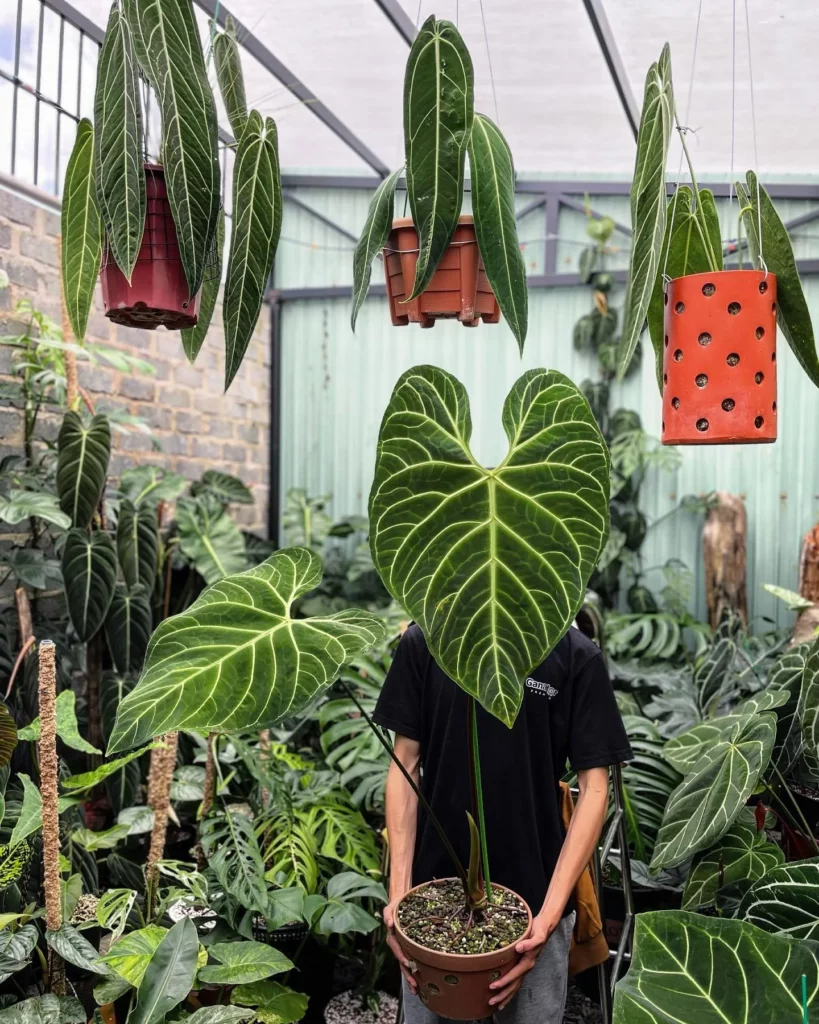
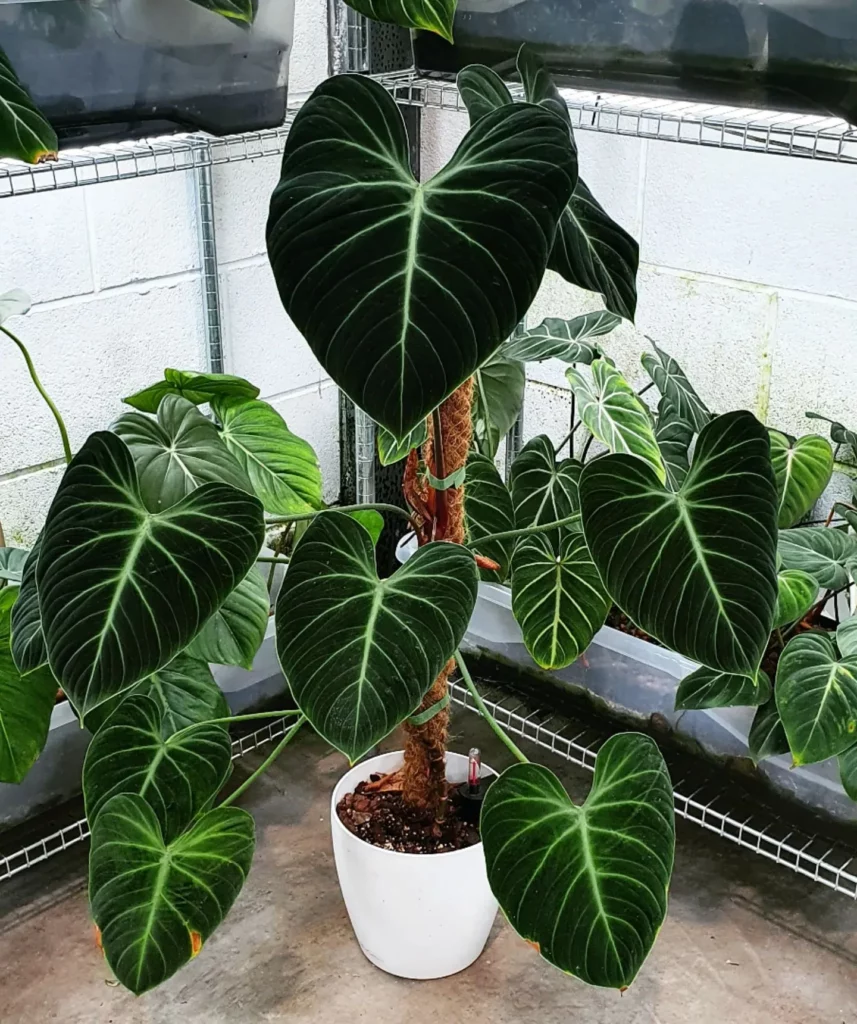
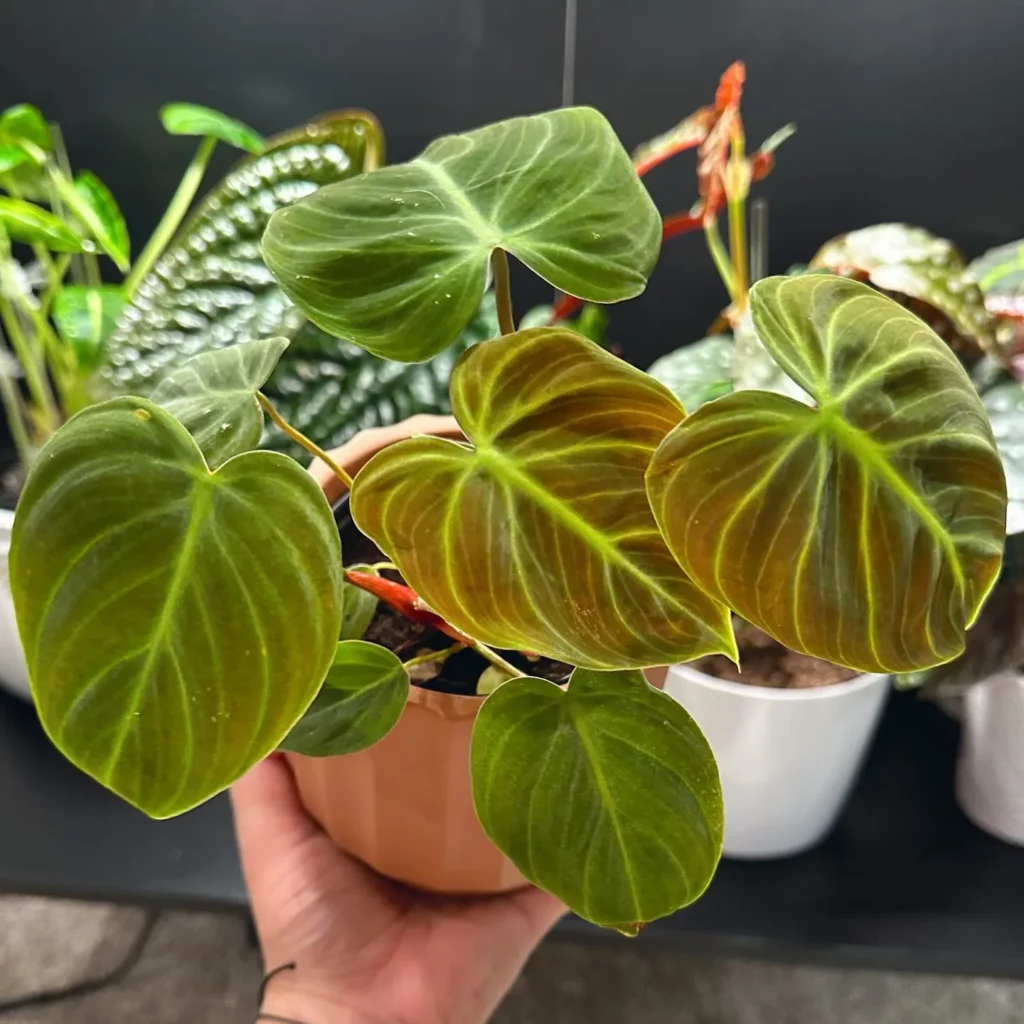
While repotting your philodendron may ultimately benefit its health in the long run, there may be some initial shock or stress after being moved into a new pot. Signs of shock or stress include drooping leaves or wilting.
To help ease this transition period for your plant, try not to disturb it too much after repotting and give it some time to adjust before fertilizing or moving it around too much. Keep an eye on its progress for several weeks after repotting and make adjustments as necessary.
The Rewards Of Proper Care
Caring for your philodendron and watching it grow healthy and strong can be incredibly rewarding. By taking the time to repot it properly and following these aftercare tips, you’re setting your plant up for success. Remember to let the soil dry out slightly between waterings, fertilize with care, monitor for shock or stress, and enjoy the beauty of your thriving philodendron!
Frequently Asked Questions

To repot an overgrown philodendron, start by selecting a new pot that is 1-2 sizes larger than the current pot. Gently remove the plant from its current pot, being careful not to damage the roots. Shake off excess soil and inspect the roots for any signs of damage or disease. Place a layer of fresh, well-draining potting mix at the bottom of the new pot. Position the philodendron in the center and fill in with additional potting mix, firming it gently around the roots. Water the plant thoroughly after repotting and place it in a suitable location with appropriate lighting.
While philodendrons do not necessarily require large pots, they do appreciate a pot that allows for proper root growth and development. It is important to choose a pot that provides enough room for the roots to spread comfortably. Going up one size or choosing a pot with a diameter 1-2 inches larger than the current pot is usually sufficient for most philodendrons.
If you have an overgrown philodendron, there are a few options you can consider. One option is to repot the plant into a larger pot, as described in the previous answer, to provide the roots with more space to grow. Another option is to prune back the plant, removing excessive growth to maintain a more manageable size. You can propagate the pruned cuttings to create new plants or share them with others. Additionally, if space allows, you can also consider dividing the overgrown philodendron into multiple plants by separating the rootball into smaller sections and repotting them individually.
Philodendrons do not necessarily prefer to be root bound. While they can tolerate being slightly root bound for a period of time, it is generally recommended to repot them once they have outgrown their current pot. Providing enough space for the roots to grow and expand promotes healthier growth and overall plant vitality. However, it’s important to strike a balance and avoid excessively large pots, as they can retain too much moisture and lead to issues such as root rot.
After reading this, check out our other articles on:
Conclusion
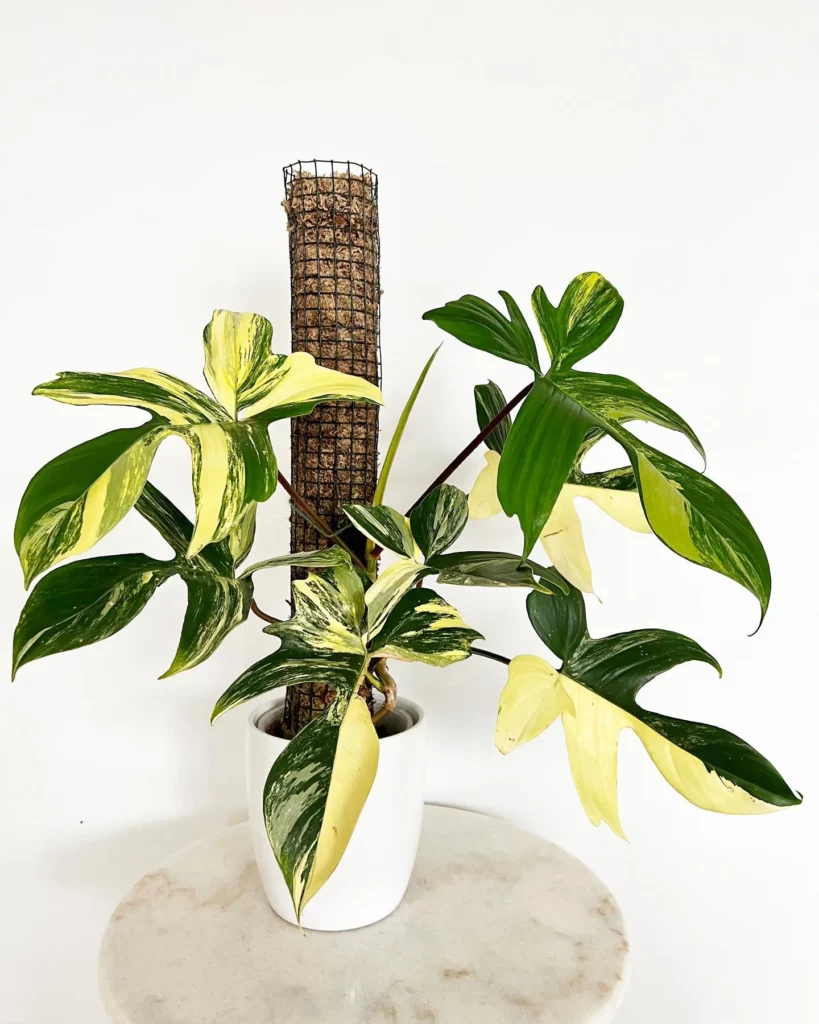
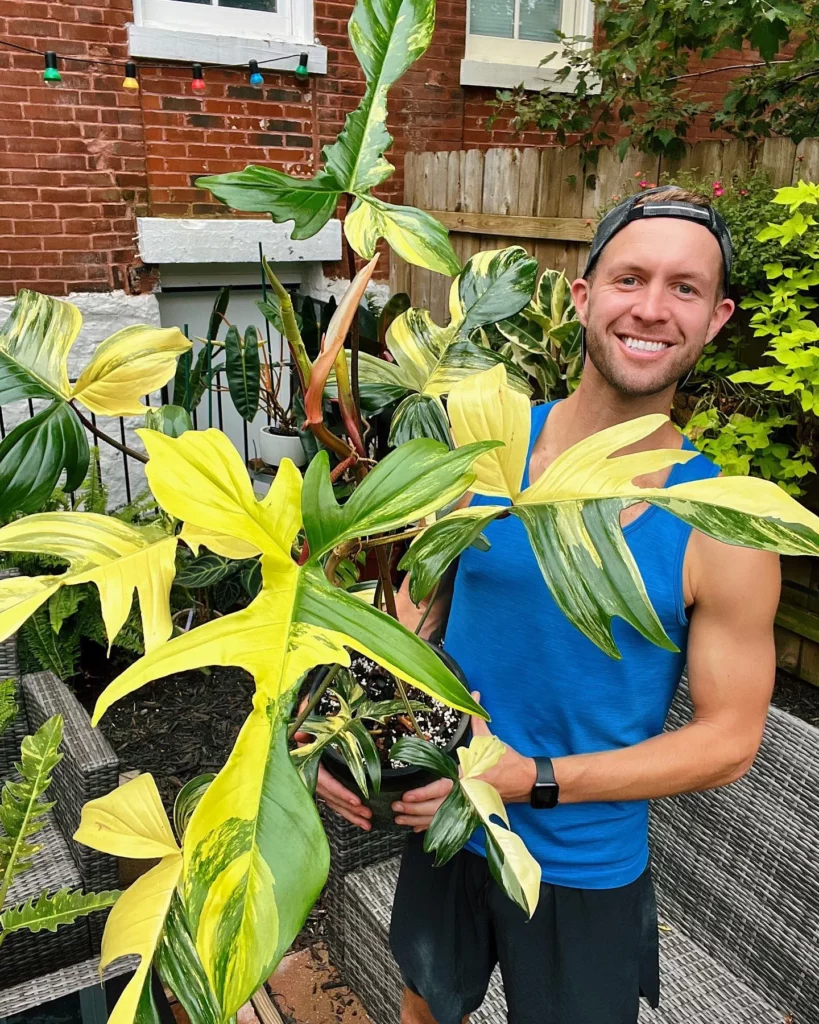

Healthy Growth Through Repotting
Repotting a large philodendron is crucial for its healthy growth. A proper pot size and soil mixture can optimize the plant’s development, leading to larger leaves and stronger stems.
Neglecting to repot a philodendron can stunt its growth or even lead to root rot or other diseases. By following the steps outlined in this article, you can ensure that your philodendron has a healthy home in which it can thrive.
Rewarding Care For Plants
Caring for plants properly can be one of the most rewarding experiences in life. Watching a plant grow from just a small sprout into a massive, thriving creature is an experience unlike any other. Repotting is just one aspect of plant care but doing it correctly provides huge rewards like bigger blooms and greener foliage.
Caring for plants also comes with various mental health benefits such as reducing stress levels and improving focus. It’s an opportunity to connect with nature and practice mindfulness through nurturing and caring for another living being.
Plants not only improve the air quality in our homes but also provide an aesthetically pleasing environment that promotes relaxation. So let’s all take some time to care for our green friends properly, including repotting them when necessary, because not only will they benefit from it but we will too.
Fight For Healthy Growth
We should always strive towards creating environments that promote healthy growth not only with plants but with everything around us including ourselves as humans. Our lives are all about growth—learning new things, discovering more about ourselves as we age—and we owe it to ourselves to create conducive circumstances that help us flourish.
Repotting your philodendron may seem like a small act of care but it has tremendous benefits both physically and mentally. So let’s embrace the idea of nurturing life in all forms and be conscious of how everything we do affects growth.

